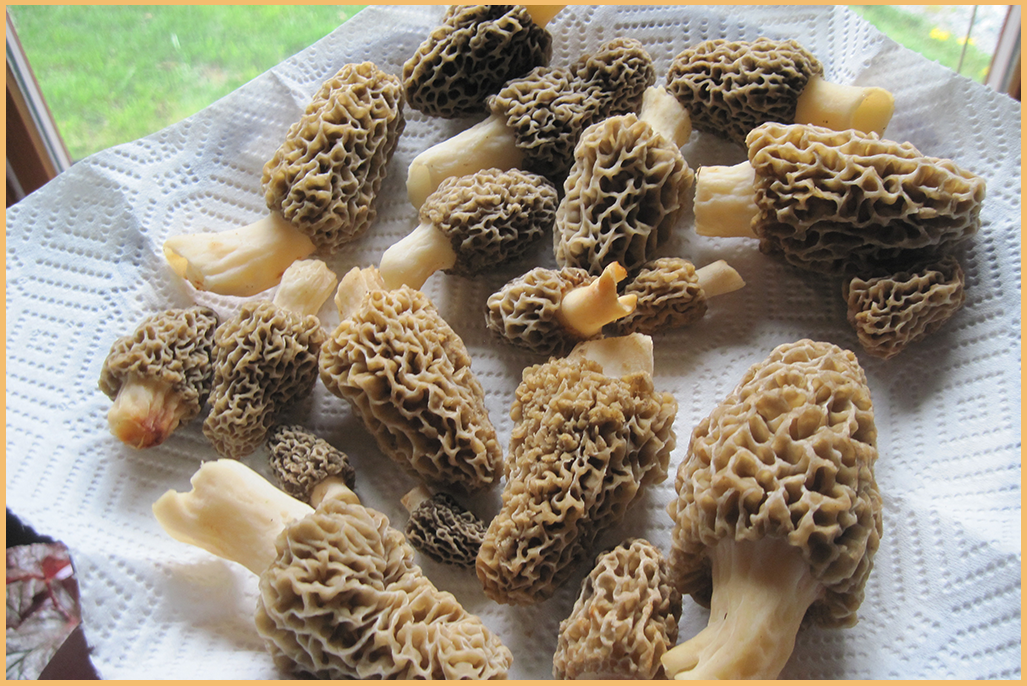For some, the beginning of spring signifies the arrival of new foliage, the start of baseball season, or even just warmer weather. However, for many adventurous Illinoisans, the final days of winter mean that morel hunting season is just around the corner.
Morel mushrooms are a type of fungus best known for their nutty flavor and meaty texture. These mushrooms, which can be found growing on the floors of Illinois’ many wooded forests, are regarded as a delicacy thanks not only to their taste but also their elusive nature. Unlike many other species of fungi in Illinois, morels are a sensitive variety of mushrooms that grow only during the spring months and only under the right conditions, meaning they are as scarce as they are delicious.
For centuries, the search for these mushrooms was a daunting task for foragers in the region. However, nowadays, hunting for morels is an exciting pastime enjoyed by families who want to spend time outside and are up for an adventure. People from across the country flock to the Midwest, dubbed the “morel mushroom capital of the world”, to enjoy nature’s scavenger hunt, especially in central and southern Illinois. The activity’s recent rise in popularity has brought about a number of festivals, competitions, and interest groups that bring together Illinoisans with a knack for scouting out these mushrooms.
While many of the state’s hunters harvest morels to use in their cooking or simply because they enjoy the challenge of finding the hidden mushrooms, some have also used their hobby to earn extra cash. Since locating these mushrooms can be so difficult, some of Chicago’s finest restaurants rely upon local hunters for their morel supply. In 2024, a pound of morels can fetch upwards of $40 per pound depending on quality and size.
Many Illinoisans would likely argue that the excitement of searching for morels is just as enjoyable as coming across them. And while morel hunting often requires a great deal of luck, there are still a few tips you should know to increase your chances of striking edible gold this spring:
- Make sure to hunt when morels are most abundant. While morel season usually lasts from late March to mid-May, sightings of morels began as early as March 4th this year.
- Hunt in areas that are known to be home to morels. These mushrooms often grow at the bases of trees around the outside of forests, especially oak, elm, ash and aspen trees, most prevalently those that have been recently disturbed by fires or flooding. If you aren’t sure which forests to search in, check the Morel Mushroom Sighting Map.
- Know how to identify a morel. Illinois is home to three species of morels, all of which have dark, cone-shaped caps that extend down the shaft of the mushroom, sometimes said to look like honeycombs. While real morels are delicious and perfectly healthy to eat, false morels are toxic and far less enjoyable. Instead of having pits and ridges like real morels, false morels have flaps and look “wrinkly.”
- If you are still unsure if the mushrooms you have come across are real morels, slice the mushroom in half from top to bottom. If the mushroom is indeed a morel, it will be completely hollow on the inside. Remember the saying “If it isn’t hollow, don’t swallow!”
- Once you have made sure that the mushrooms you found are indeed morels, all that’s left to do is harvest. To do so, simply cut the mushrooms at their base with a sharp knife and store them in a mesh bag. The permeable mesh allows for your newly collected morels to spread their spores as you continue to search the forest, providing for an even more bountiful spread next season.
IDOA Popular Crop Incentive Program Returns
https://repcmiller.com/2023/12/04/idoa-popular-crop-incentive-program-returns/
